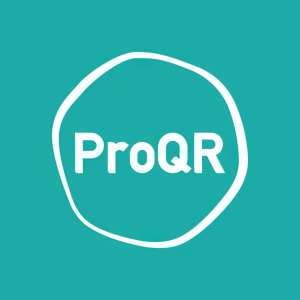ProQR Announces Last Patient Has Completed 12 Month Visit in Phase 2/3 Illuminate Trial of Sepofarsen
Rhea-AI Summary
ProQR Therapeutics N.V. (NASDAQ: PRQR) announced the completion of the last patient visit in the Phase 2/3 Illuminate trial for sepofarsen, an RNA therapy targeting Leber Congenital Amaurosis 10 (LCA10). Results are expected to be announced in Q1 2022. The trial involved 36 patients aged 8 and older and aims to assess improvements in visual acuity. Previous Phase 1/2 studies showed significant improvements in visual acuity at a target registration dose. LCA10 affects approximately 2,000 individuals in the Western world, and sepofarsen has received several fast-track designations.
Positive
- Completion of last patient visit in Phase 2/3 Illuminate trial, marking a crucial milestone.
- Top-line results expected in Q1 2022, potentially advancing treatment options for LCA10.
- Previous studies showed significant improvement in visual acuity, with a mean improvement of approximately 9 lines on the ETDRS chart.
Negative
- None.
News Market Reaction 1 Alert
On the day this news was published, PRQR gained 3.84%, reflecting a moderate positive market reaction.
Data tracked by StockTitan Argus on the day of publication.
- Top-line data now expected to be announced in Q1 2022
- Sepofarsen is a potential first-in-class RNA therapy for the treatment of LCA10, a rare inherited retinal disorder that leads to blindness
LEIDEN, Netherlands & CAMBRIDGE, Mass., Jan. 04, 2022 (GLOBE NEWSWIRE) -- ProQR Therapeutics N.V. (Nasdaq: PRQR) (the “Company”), a company dedicated to changing lives through the creation of transformative RNA therapies for genetic eye diseases today announced that the last patient completed their last visit (Month 12) in the Phase 2/3 Illuminate trial of sepofarsen for CEP290-mediated Leber Congenital Amaurosis 10 (LCA10) due to the p.Cys998X mutation, also known as c.2991+1655A>G.
“The last patient having completed their 12 Month visit is an important milestone toward the top-line results from the Phase 2/3 Illuminate trial of our lead program sepofarsen for LCA10,” said Daniel A. de Boer, Founder and Chief Executive Officer of ProQR. “Based on this event, we now anticipate sharing the top-line results in the first quarter of 2022. We are grateful to those who have supported the execution of this trial, including our investigators, patients, and caregivers, and look forward to sharing the top-line results this quarter.”
The Illuminate trial completed enrollment in January 2021 following randomization of 36 patients aged 8 years or older to receive either sepofarsen at the target registration dose, a low dose, or sham treatment. The primary endpoint for Illuminate is mean change from baseline in best-corrected visual acuity (BCVA) at Month 12.
The Illuminate trial was initiated based on data from a Phase 1/2 study, which indicated that at Month 12, patients treated with sepofarsen had an improvement in visual acuity, as measured by BCVA. In a subset of patients (n=6) who were treated at the target registration dose, the mean change from baseline for BCVA at Month 12 was -0.93 logMAR, equivalent to approximately 9 lines improvement (or 45 letters) on the ETDRS chart. In the Phase 1/2 study, concordant improvements in measures of full-field stimulus testing (FST) and mobility were also observed, which are secondary endpoints in the Illuminate trial.
About Leber Congenital Amaurosis 10 (LCA10)
Leber congenital amaurosis (LCA) is the most common cause of blindness due to genetic disease in children. It consists of a group of diseases of which LCA10 is the most frequent and one of the most severe forms. LCA10 is caused by mutations in the CEP290 gene, of which the p.Cys998X mutation, also known as c.2991+1655A>G, has the highest prevalence. LCA10 leads to early loss of vision causing most people to lose their sight in the first few years of life. To date, there are no treatments approved that treat the underlying cause of the disease. Approximately 2,000 people in the Western world have LCA10 because of this mutation.
About Sepofarsen
Sepofarsen (QR-110) is being evaluated in the pivotal Phase 2/3 Illuminate trial and is a first-in-class investigational RNA therapy designed to address the underlying cause of Leber congenital amaurosis 10 due to the p.Cys998X mutation (also known as the c.2991+1655A>G mutation) in the CEP290 gene. The p.Cys998X mutation leads to aberrant splicing of the mRNA and non-functional CEP290 protein. Sepofarsen is designed to enable normal splicing, resulting in restoration of normal (wild type) CEP290 mRNA and subsequent production of functional CEP290 protein. Sepofarsen is intended to be administered through intravitreal injections in the eye and has been granted orphan drug designation in the United States and the European Union and received fast-track designation and rare pediatric disease designation from the FDA as well as access to the PRIME scheme by the EMA.
About ProQR
ProQR Therapeutics is dedicated to changing lives through the creation of transformative RNA therapies for the treatment of severe genetic rare diseases such as Leber congenital amaurosis 10, Usher syndrome and retinitis pigmentosa. Based on our unique proprietary RNA repair platform technologies we are growing our pipeline with patients and loved ones in mind.
Learn more about ProQR at www.proqr.com.
FORWARD-LOOKING STATEMENTS
This press release contains forward-looking statements. All statements other than statements of historical fact are forward-looking statements, which are often indicated by terms such as "anticipate," "believe," "could," "estimate," "expect," "goal," "intend," "look forward to", "may," "plan," "potential," "predict," "project," "should," "will," "would" and similar expressions. Such forward-looking statements include, but are not limited to, statements regarding sepofarsen (QR-110) and the clinical development and the therapeutic potential thereof, including timing of and results from the Phase 2/3 Illuminate trial and results from the Phase 1/2 study.. Forward-looking statements are based on management's beliefs and assumptions and on information available to management only as of the date of this press release. Our actual results could differ materially from those anticipated in these forward-looking statements for many reasons, including, without limitation, the risks, uncertainties and other factors in our filings made with the Securities and Exchange Commission, including certain sections of our annual report filed on Form 20-F. These risks and uncertainties include, among others, the cost, timing and results of preclinical studies and clinical trials and other development activities by us and our collaborative partners whose operations and activities may be slowed or halted by the COVID-19 pandemic; the likelihood of our clinical programs being executed on timelines provided and reliance on our contract research organizations and predictability of timely enrollment of subjects and patients to advance our clinical trials and maintain their own operations; our reliance on contract manufacturers to supply materials for research and development and the risk of supply interruption from a contract manufacturer; the potential for future data to alter initial and preliminary results of early-stage clinical trials; the unpredictability of the duration and results of the regulatory review of applications or clearances that are necessary to initiate and continue to advance and progress our clinical programs; the ability to secure, maintain and realize the intended benefits of collaborations with partners; the possible impairment of, inability to obtain, and costs to obtain intellectual property rights; possible safety or efficacy concerns that could emerge as new data are generated in research and development; our ability to maintain and service our loan facility with Pontifax and Kreos; general business, operational, financial and accounting risks; and risks related to litigation and disputes with third parties. Given these risks, uncertainties and other factors, you should not place undue reliance on these forward-looking statements, and we assume no obligation to update these forward-looking statements, even if new information becomes available in the future, except as required by law.
Cautionary Note on Future Updates
The statements contained in this press release reflect our current views with respect to future events, which may change significantly as the global consequences of the COVID-19 pandemic rapidly develop. Accordingly, we do not undertake and specifically disclaim any obligation to update any forward-looking statements.
ProQR Therapeutics N.V.
Investor Contact:
Sarah Kiely
ProQR Therapeutics N.V.
T: +1 617 599 6228
skiely@proqr.com
or
Hans Vitzthum
LifeSci Advisors
T: +1 617 430 7578
hans@lifesciadvisors.com
Media Contact:
Robert Stanislaro
FTI Consulting
T: +1 212 850 5657
robert.stanislaro@fticonsulting.com








